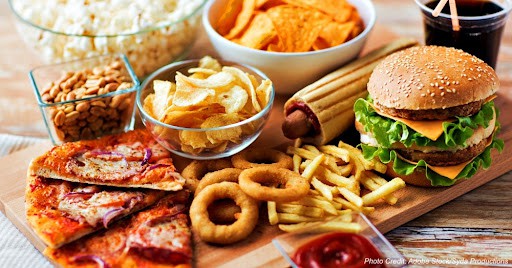Ultraprocessed Foods Now Comprise 2/3 Of Calories In Children And Teen Diets
Special Correspondent | Last Updated : August 14, 2021The calories that youngsters and youths devoured from ultra-processed food sources bounced from 61% to 67% of all-out caloric admission from 1999 to 2018, as indicated by another examination from experts at the Nutrition Science School and the Tufts University. Distributed August 10, 2021, in JAMA, the examination dissected dietary admission from 33,795 youngsters and youths across the country.
Some whole-grain slices of bread and dairy food assortments are ultra-processed, and they’re more grounded than other ultra-processed food assortments. Preparing can keep food fresher longer, takes into consideration food fortress and improvement, and upgrades shopper accommodation, said senior and comparing creator Fang Zhang, nourishment disease transmission specialist at the Friedman School. However, numerous ultra-processed food sources are not so great, with more sugar and salt, and not so great, than natural and negligibly prepared food sources, and the expansion in their utilization by kids and youngsters is unsettling.

The greatest spike in calories came from such ready-to-eat or ready-to-warm dishes as takeout and frozen pizza and burgers: from 2.2% to 11.2% of calories. The second-biggest spike in calories came from bundled sweet tidbits and pastries, the utilization of which developed from 10.6% to 12.9%.
There was a greater extension in the use of ultra-processed food sources among non-Hispanic Blacks and Mexican Americans than non-Hispanic Whites. Patterns in other racial/ethnic gatherings were not evaluated because of the absence of adequate information that takes into consideration broadly agent gauges across study cycles.
There were no genuinely huge contrasts in the general discoveries by parental instruction and family pay. The absence of inconsistencies dependent on parental instruction and family pay demonstrates that ultra-processed food sources are inescapable in youngsters’ weight control plans, said Zhang. This discovery upholds the requirement for specialists to follow patterns in food utilization all the more completely, considering utilization of ultra-processed food sources.
Over the examination time frame, calories from frequently better natural or insignificantly prepared food sources diminished from 28.8% to 23.5%. The leftover level of calories came from decently handled food varieties like cheddar and canned products of the soil, and the buyer added flavor enhancers like sugar, nectar, maple syrup, and spread.
There was uplifting news: Calories from sugar-improved refreshments dropped from 10.8% to 5.3% of generally speaking calories, a 51% drop.
This discovering shows the advantages of the coordinated mission in recent years to decrease in general utilization of sweet beverages said, Zhang. We need to assemble similar energy and level of responsibility with regards to other unfortunate ultra-processed food varieties like cakes, treats, doughnuts and brownies.
Food handling is a frequently disregarded measurement in sustenance research. We might have to consider that multiprocessing of certain food sources might be related to wellbeing chances, autonomous of the helpless supplement profile of ultra-processed food varieties, by and large, closed Zhang.
Ultra-processed food varieties are prepared to eat or prepared to-warm things regularly high in added sugar, sodium, and starches, and low in fiber, protein, nutrients, and minerals. They regularly contain added sugars, hydrogenated oils, and flavor enhancers. Models incorporate bundled sweet tidbits and pastries, sweet breakfast cereals, French fries, inexpensive food burgers, and some lunchmeats like bologna and salami. At the point when burned-through in overabundance, these food sources are connected with diabetes, heftiness, and other genuine ailments, like certain tumors.
